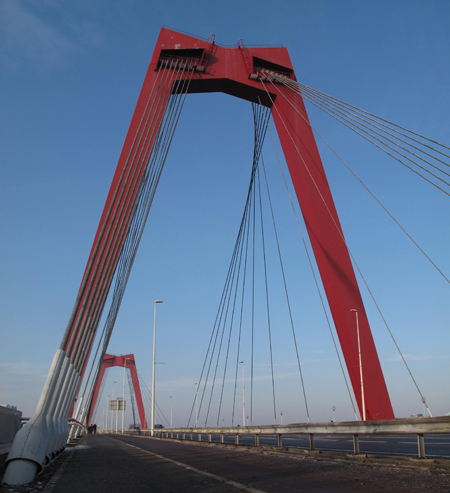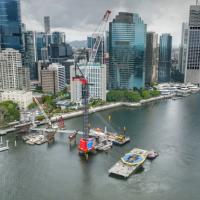Authorities in Rotterdam have begun a series of tests that simulate the remediation of bridge sections that were recently contaminated with asbestos during renovation work.
At the beginning of October this year grit supplier Eurogrit advised its customers to stop using its aluminium silicate blast cleaning abrasive after it was found to be contaminated with a form of asbestos called chrysotile, or ‘white asbestos’.
As a result, renovation work on the 318m-long cable-stayed Willems Bridge in central Rotterdam ceased on 6 October, where this type of grit had been in use from July to strip the distinctive red paint off the bridge. At the time, high-pressure water jet operations were under way at the northern pylon and the lower part of the southern pylons, which were encased in plastic sheet tents to prevent paint particles from spreading to the surrounding environment.
Samples taken within the plastic sheet tents revealed no asbestos in the air, although a small amount of asbestos was found on one of the surface samples. Subsequent testing outside the work tents as well as surrounding areas did not reveal any asbestos.
At the end of October Rotterdam City Council began setting up a tented area to simulate the remediation operations that are planned for the Willems Bridge’s contaminated sections. The exercise aims to ascertain the levels of asbestos fibres that could be produced during remediation work and which could be harmful to the cleaners and the environment.
The asbestos contamination has also affected the refurbishment of the Nijkerker Bridge, around 30km northeast of Utrecht, which started in September. Work on the Nijkerker Bridge was suspended on 12 October following the asbestos revelations.
Some renovation work has now restarted in the non-affected sections of the Willems Bridge.




